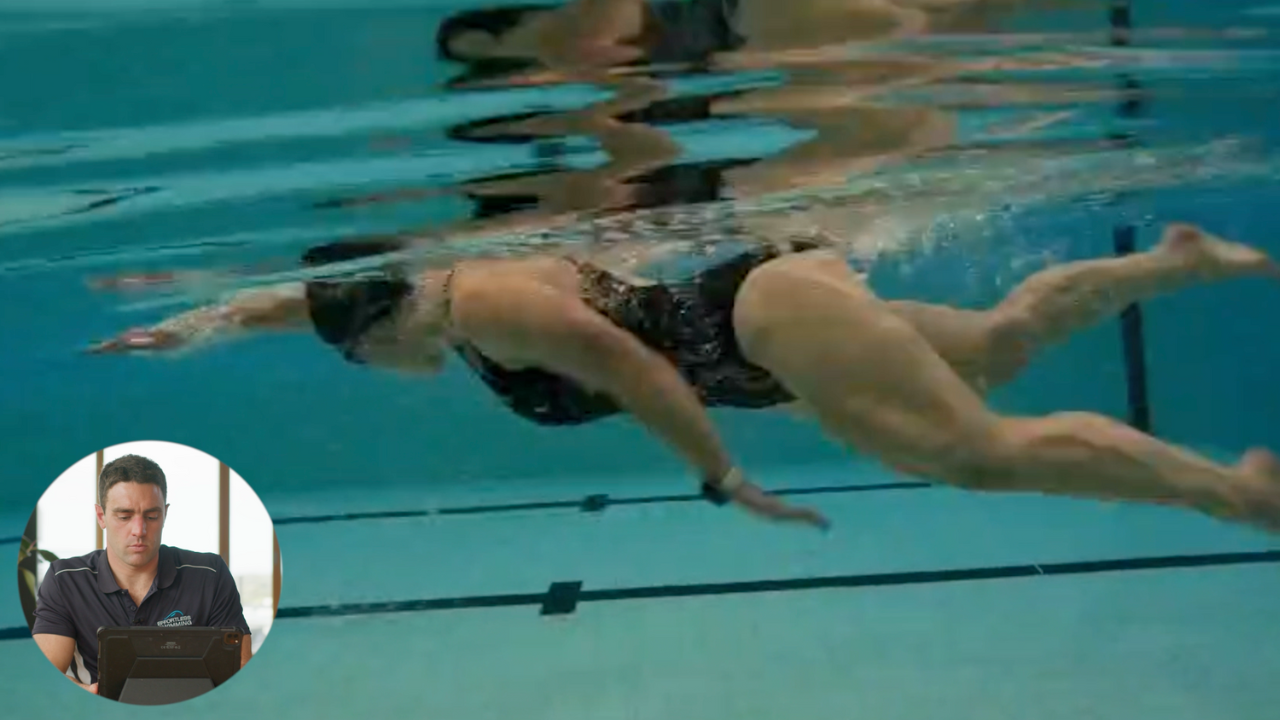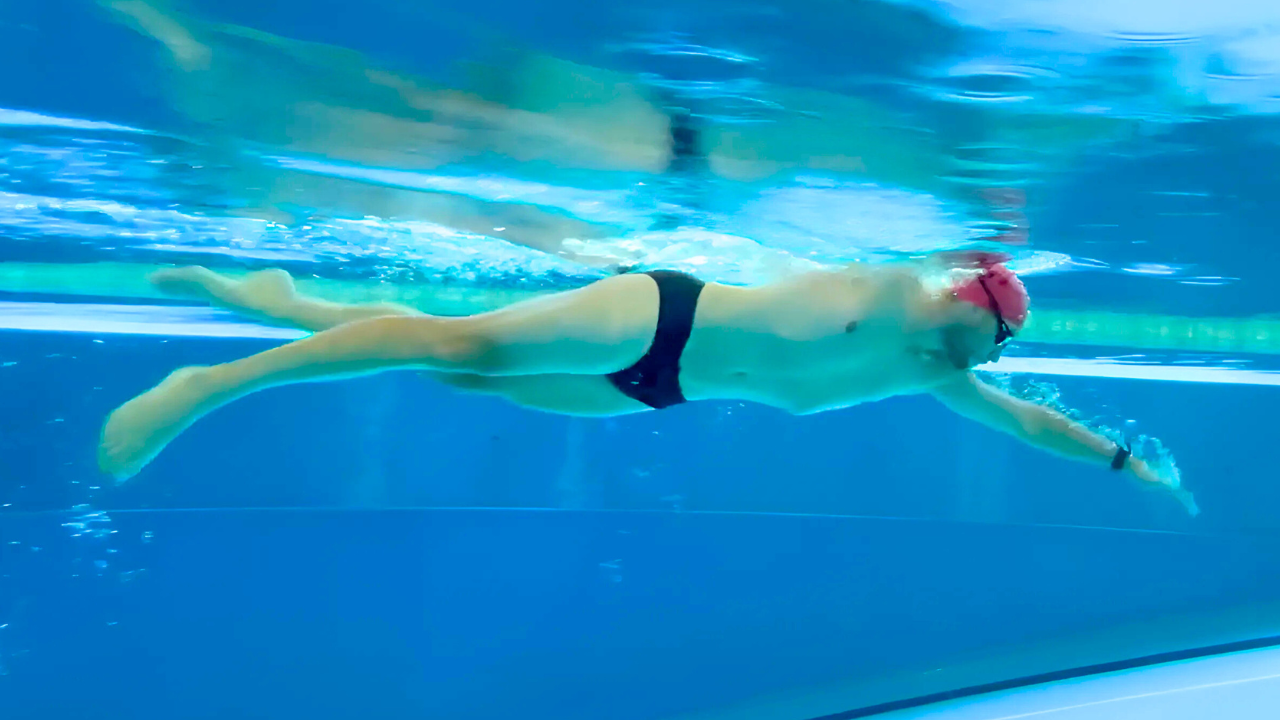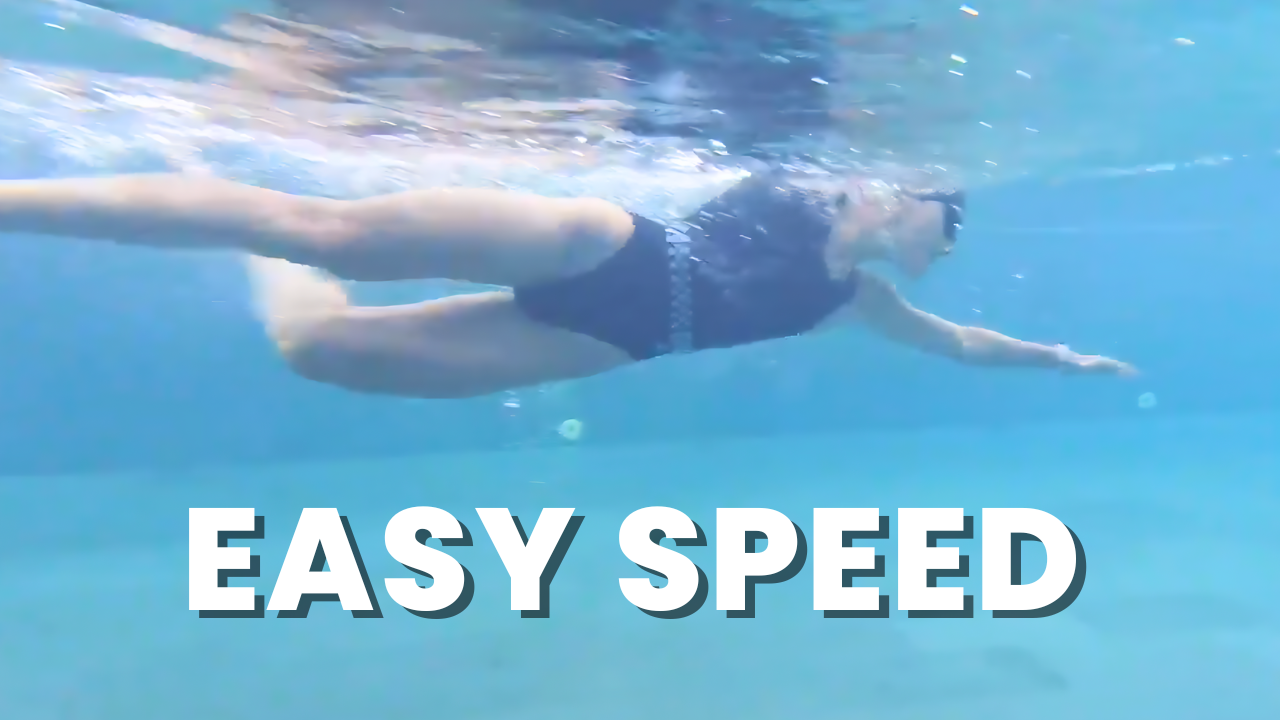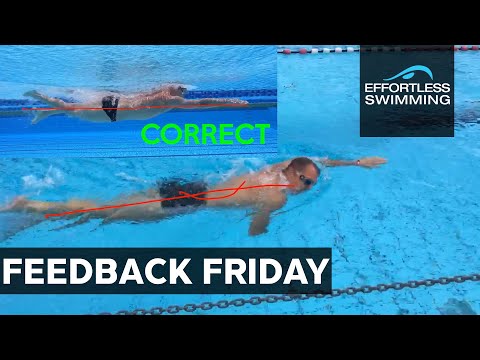Over the past 18+ months, Ben Brui has gone from being unable to swim more than 25m, to successfully competing in Half Ironman events.
Transcription:
It’s a dropped elbow catch. So, the forearm is facing pretty much down to the bottom of the pool here on this left hand side on a breathing stroke, which is harder to do. You can see the forearm and hand is starting to really angle back there. So, what a huge difference in the catch.
In today’s video, we have another case study of a swimmer who I’ve worked with over the last 12 months or a little bit longer than that, and Ben came to swimming without any background in it. He was afraid to get in the deep end of the pool, afraid to go too deep on the beach and would always be drinking water if he swam more than about five to 10 meters. And you’ll see through these videos that there’s been a radical change in his stroke and his comfort in the water over that last 12+ months. And we’re going to talk about some of those changes that he’s made in his swimming. And if you feel like you seem a bit like this, how Ben was swimming before, then I’ll talk about what are some of the things that you might be able to do in order to keep the heart rate down, feel comfortable, and be a lot more balanced in the water.
So, if we cut to the first view for a moment, you’ll see from the front that in the before shot, the legs are working really hard. So, he was over kicking, which basically means kicking a lot harder and a lot faster than what you need to. There was also a lot of bend in the knees in his kick, so it wasn’t this smoother, slightly straighter leg kick and the inner thighs, the knees were coming a long way apart as well. The other thing that you will see there is from the front that the legs were dropping down a lot and from this after view, body position is much better. And once you can get your hips up and your legs up and get to that horizontal body position, swimming becomes so much easier and so much more enjoyable. But that can feel like a very challenging and a very difficult thing if you don’t come from that swimming background or you’ve never had lessons before.
Well, there’s a couple of things we’ve worked on here. The first one I’ll show you from the side is one of the things we worked on is head position. So, in this before shot where you can see my mouse is, the head position was actually a little bit too low. Now I know you do need to have the head in a somewhat downwards position to bring the back half up, but the back half is not completely controlled by the head. It’s controlled more through the core and through the hips. So yes, you need to have your head somewhere down in the water, but we don’t want to have it so deep where the entire thing is under the water like you can see here. So, what we actually had been doing was look slightly further forwards, keep the neck long and extended and you just want to have the top part of the head out of the water and you can actually see it there if we skip back a little bit. You’ll see this head position where the eyes are at about 45 degrees, top of their head’s out of the water and that’s actually a better head position because if you’re looking down too low and your chin’s into your chest, it’s very hard to breathe comfortably.
It cuts off the airways there. So, there’s nothing wrong with looking slightly forwards. For most people, especially the triathletes, the adults that we work with, we encourage them to look somewhat forwards. Obviously, not all the way forward. We don’t want the chin to be out in front, but where he is in this after shot, that is a really nice position to be in. The other thing that we had to work on was the entry and the timing of the stroke. When Ben was entering the water was with the elbow first and you’ll see that the elbow here is going first, the hand is last. The same thing on this last stroke, the elbow is going first and then the hand. What we had to change that to was entering fingertips first, as you can see there in the after shot and then sliding the hand forwards out in front of the head.
So, you want, and we’ll cut back to that, the reach phase of the stroke should be happening in the water out in front of the shoulder. The reason that that will help is balance. So, if the reach is happening at this depth, then that really helps bring the back half up. But if your reach is happening above the water, then it means that the weight of the arm might be two kilos, three kilos. The weight of the arm is being held up above the surface and so being lifted up here is always going to drop the back half down. Now, that can feel very strange when you change it. If you do overreach and your elbow enters first, for you to be able to get the fingertips in first and then slide forwards, will feel very weird because you’ve got a little bit of drag or a little bit of resistance being created on the arm in this position and it’s different than what you had. So, you just need to get used to that sort of feeling, but when you do get used to it, it can make your swimming a lot easier. And we actually had a swimmer this weekend at a clinic who was swimming very similar to Ben, and by focusing on that as one of the changes, she was able to really bring her hips and the legs up.
Now, the other thing that helped here too was getting a bit more rotation. So, in this before video, I’m going to play it through, especially from the top view. You’ll see that there was very little upper body rotation going on, so the rotation was more forwards and backwards. You can see it there. This shoulder comes forward, that shoulder goes backwards instead of side to side. And so, we weren’t quite getting enough rotation through the upper body, through the hips to be able to do all of these things comfortably. So, we also worked on some rotation drills. So, we worked on kicking with a snorkel, having fins on and just practicing keeping the hips and the upper body in one straight line. And you’ll see in this after shot here that now we’re starting to get that better rotation. So, the shoulder’s out, we can see the underarm there. As a coach, we should be able to see the underarm through that recovery. Getting those fingertips in, that is such a better entry than before and suddenly started getting that shoulder out a bit more, which is good and entering that a little bit earlier.
The other thing you’ll notice in this view is the breathing. So, where he was breathing, you can see that the eyes are looking back behind him, and the curve through the body that happens there and the head was quite lifted. Whereas now he’s breathing to the side, the head stays in line with the spine and with the rest of the body and that just keeps the line of the entire body much straighter. So, it was shifting off to the side there, so he had to practice just changing the way he was breathing. Changing where he was looking when he was getting that breath. So, that is a lot better. You’ll also notice the breathing under the water. So, because he was having to work really hard to keep the legs up, he was struggling to swim more than 25 or 50 meters and so the breathing was really labored. It was very hard. One of the things we changed, having that exhale come primarily through the nose, whereas before it was all through the mouth. We’ll just play this through. So, you can see all the breathing, all the exhale is going through the mouth only. Whereas in this after shot, this light trickle of air through the nose. And then as he turned his head to breathe, that full exhale is happening.
Now, as we cut to some of these other views, we’ve also been working on the catch. So yeah, we’ve worked on pretty much all of the aspects of the stroke, but we go through these step by step and one of the first things was really just getting that balance and breathing to happen. But we worked on the catch and you’ll see what a difference this is. Yeah, so that’s the same arm. That’s the left arm going through the catch in that before shot. You can say how dropped the elbow is. By dropped, I mean if we draw a line from your shoulder to your hand, the elbow is below that line. It’s a dropped elbow catch. So, the forearm’s facing pretty much down to the bottom of the pool. Here on this left hand side, on a breathing stroke, which is harder to do, you can see the forearm and hand is starting to really angle back there.
So, what a huge difference in the catch you can see. So, on this right hand side, getting the fingertips to point down. So much better, so much more effectively. You’ve got this nice elevated wrist position. Whereas, we look back here, again you can just see that is going straight down to the bottom of the pool. Now, this takes time. It’s been a bit over 12 months since we’ve worked together and Ben’s been swimming a little bit longer than that, but what a huge difference. So, if you are currently in that position in your swimming where you just feel like it is very hard, it’s very labored and you can’t swim more than about 25 meters without tiring out. It is absolutely possible to get quicker. Just need the right plan, the right structure, and it can help to know what those things are that are tiring you out.
But there’s a really good chance it’s probably the kick. So, you might be over kicking. So, kicking harder than what you need to. Keep the kick really light, a two out of 10 effort or a three out of 10 effort. Keep it really light. Secondly, it’s probably the entry. A lot of new swimmers do overreach on the entry. So, you probably need to get the fingertips entering first. You might be swimming too flat where there’s no rotation through the hips or the upper body. So, you might just need to work on that upper body rotation. Breathing, there’s a good chance that you’re probably lifting your head or turning the head too far when you get your breath. So, if you can practice breathing to the side of the pool and keeping part of that bottom goggle in the water and keeping it in line with your body, that can be another thing.
But there’s a really good chance it’s probably the kick. So, you might be over kicking. So, kicking harder than what you need to. Keep the kick really light, a two out of 10 effort or a three out of 10 effort. Keep it really light. Secondly, it’s probably the entry. A lot of new swimmers do overreach on the entry. So, you probably need to get the fingertips entering first. You might be swimming too flat where there’s no rotation through the hips or the upper body. So, you might just need to work on that upper body rotation. Breathing, there’s a good chance that you’re probably lifting your head or turning the head too far when you get your breath. So, if you can practice breathing to the side of the pool and keeping part of that bottom goggle in the water and keeping it in line with your body, that can be another thing.
And then obviously, the catch in the pool. Working on that is going to make everything else so much easier to do. So, if that’s you, then that’s normally the main thing that, will be tiring you out. So what’s the best way to progress through these things? I’d recommend looking through our five core principles, which I’ll link to below. We explain each of those principles on our website, so I’ll link to that. And in those five core principles, we start with breathing and staying relaxed. That’s the very first thing, and if you’re looking to get some drills, some workouts around developing each of these things, then check out our effortless swimming video membership, which I’ll also link to below. But if you are new to the sport, know that it can become easy, you can swim continuously and you can become a very proficient swimmer.
It just takes time and practice on the right things and it’s not like you probably need to try harder to be able to do it. There’s a good chance you probably need to put in a bit less effort in the stroke because you can see here that this after one looks so much easier than the before one, so it’s often not a matter of trying harder to be able to swim better. It’s a matter of technique. That’s really what it comes down to with a lot of swimmers, because a lot of the swimmers that I come across at clinics and at the camps that we run, they’re putting the work in. It’s just the technique that’s not allowing them to swim as well as they’d like to. So, let me know in the comments below if this is you, is there something that you think you’re doing in your stroke and please like this video and subscribe if you did enjoy it and share it with someone who you know is looking to become a better swimmer. Thanks for watching. See you next week.










